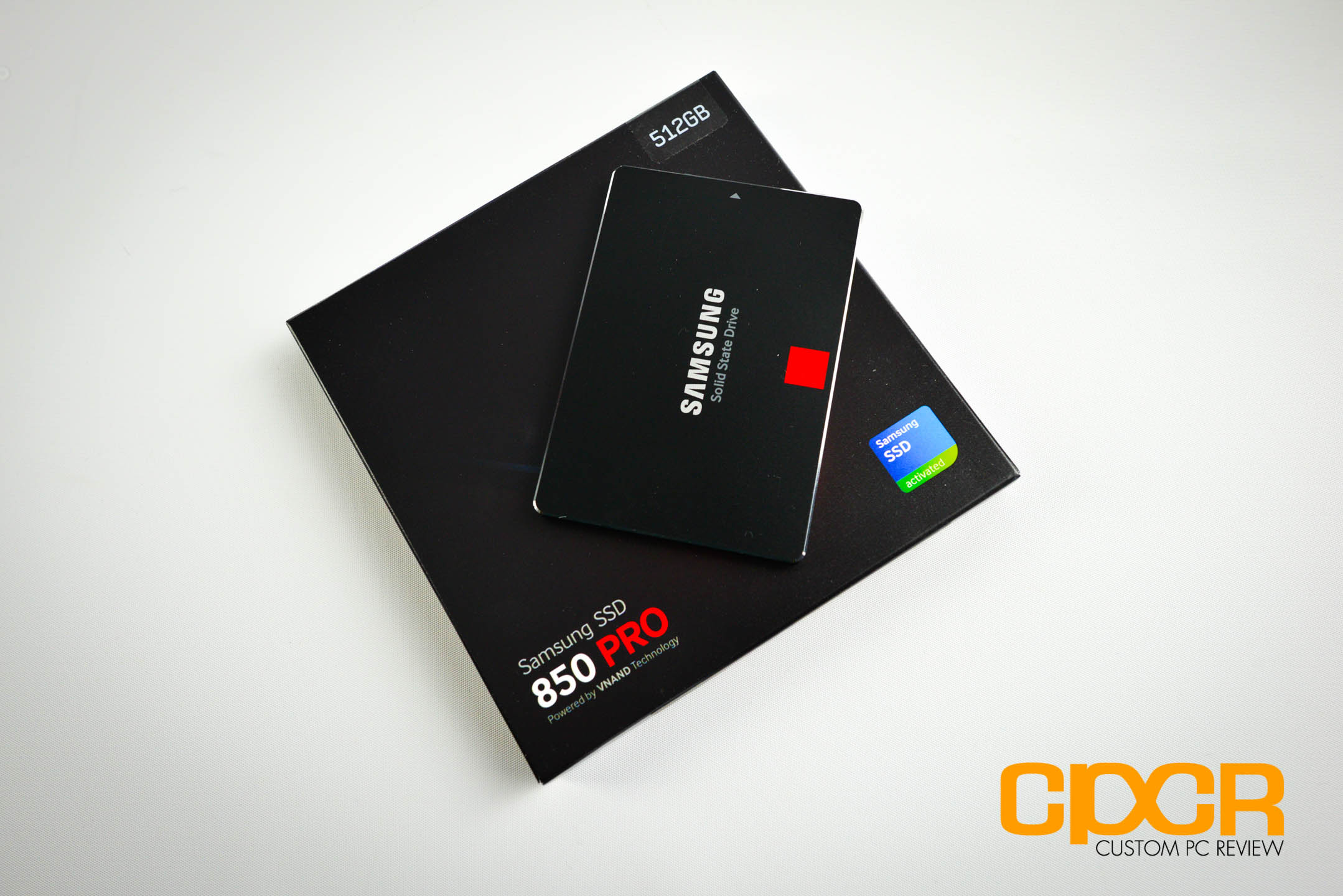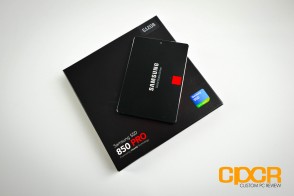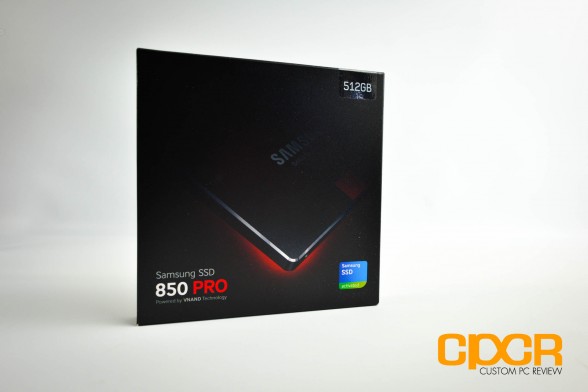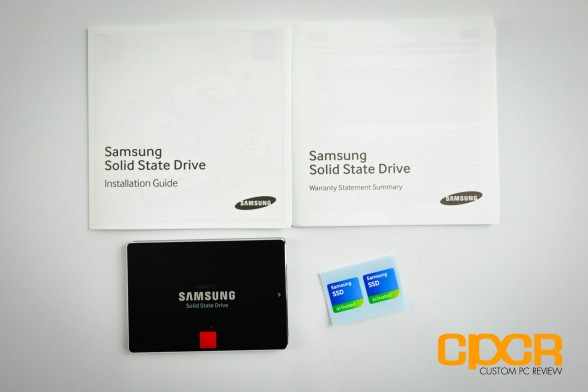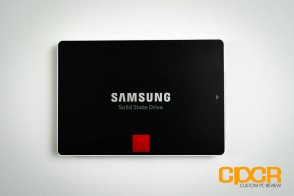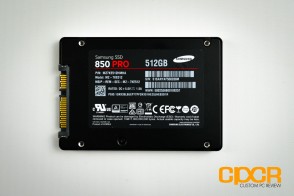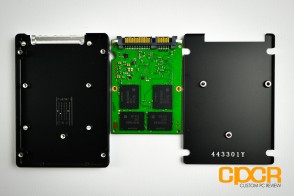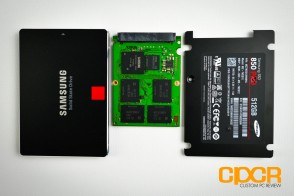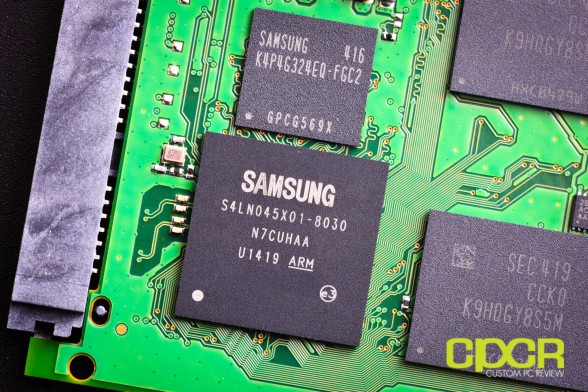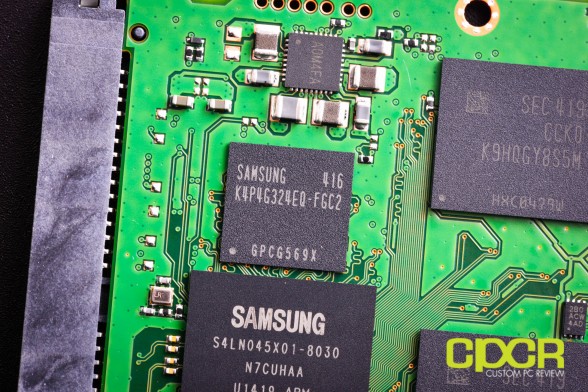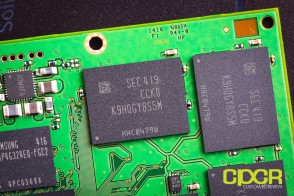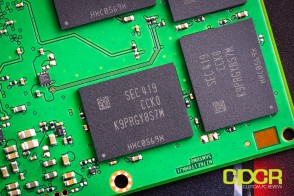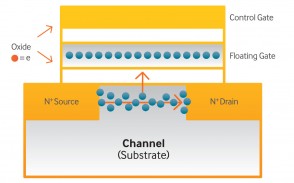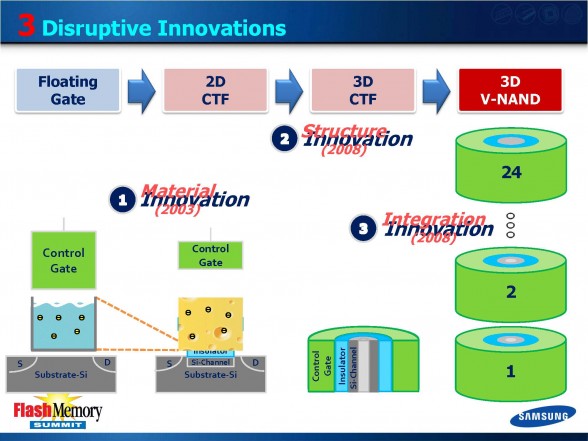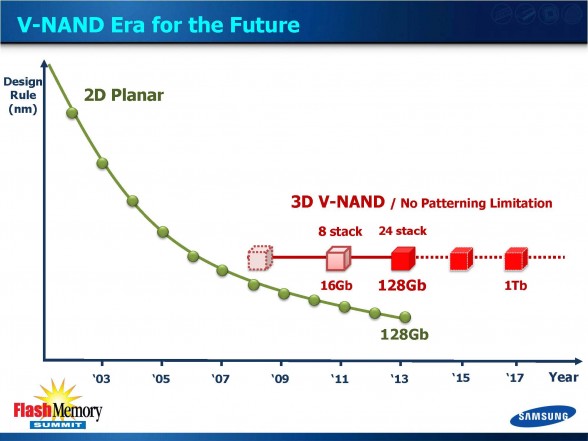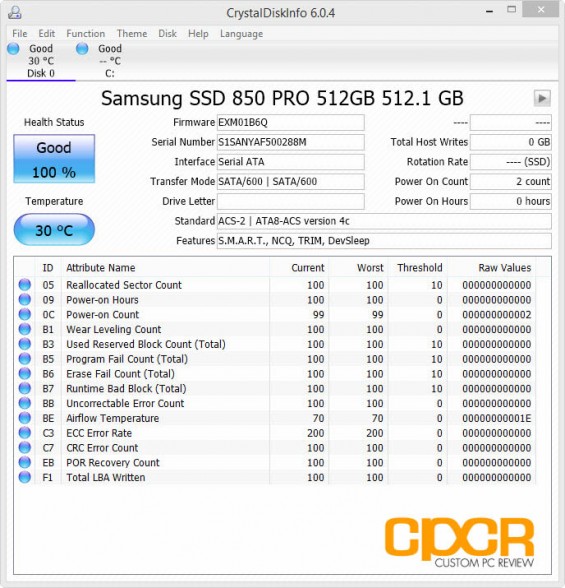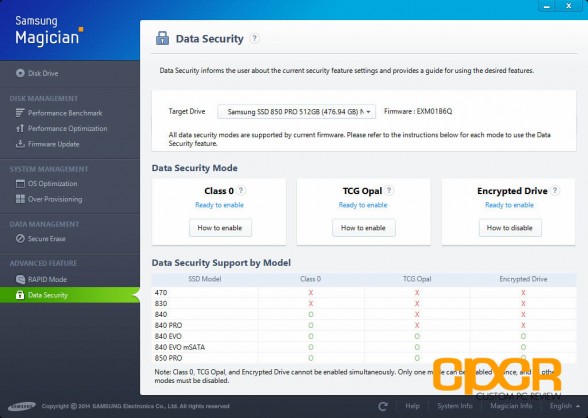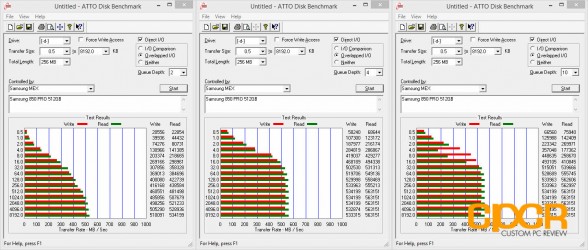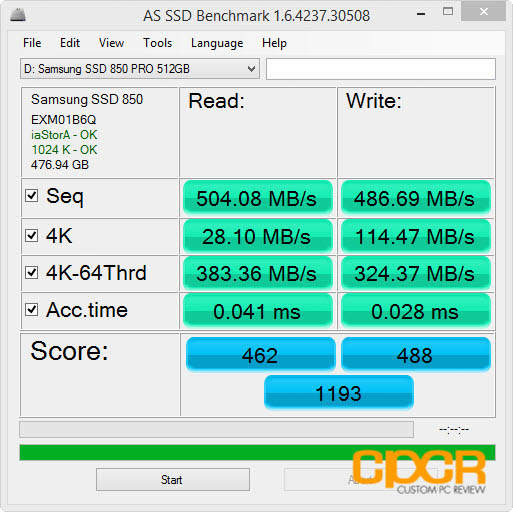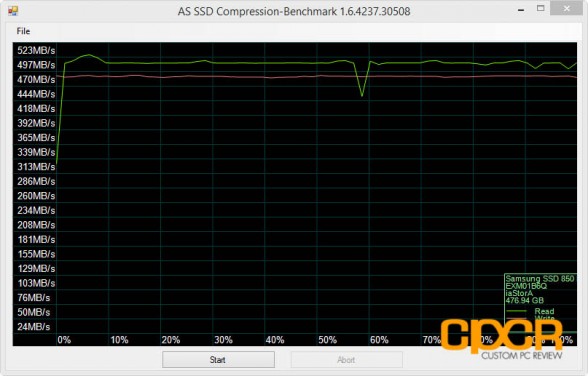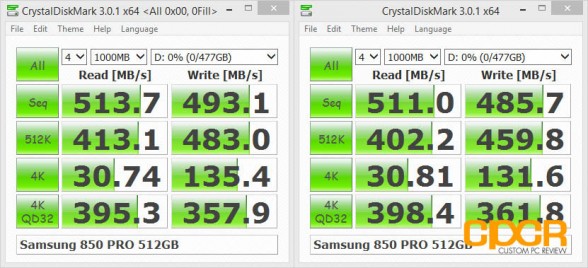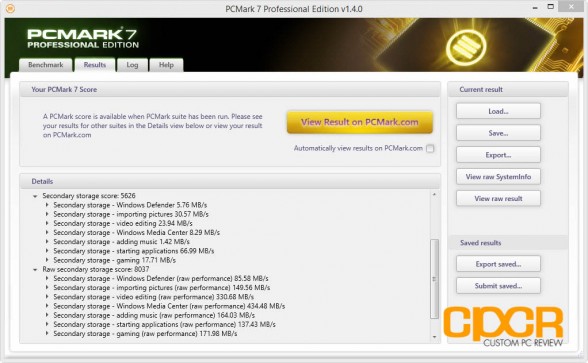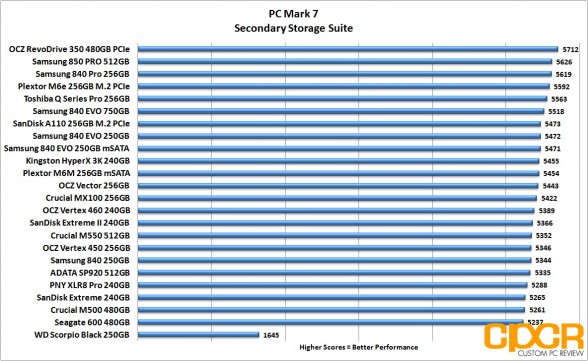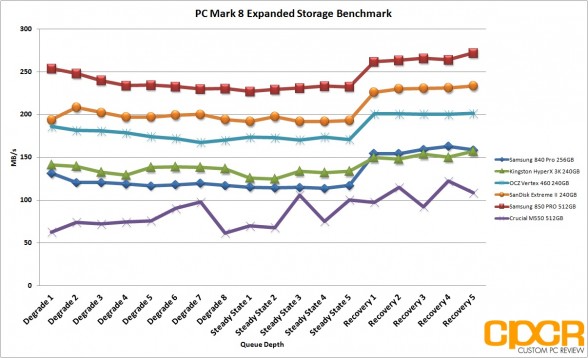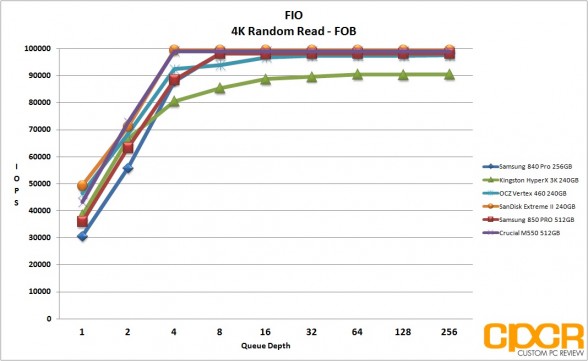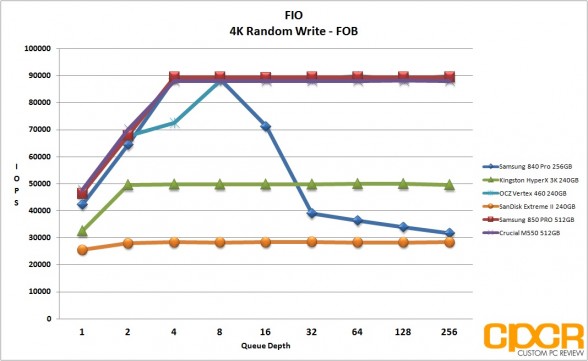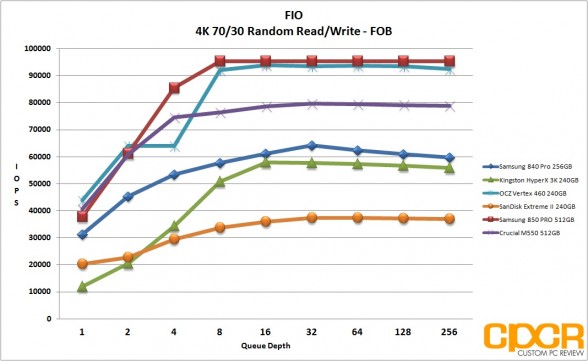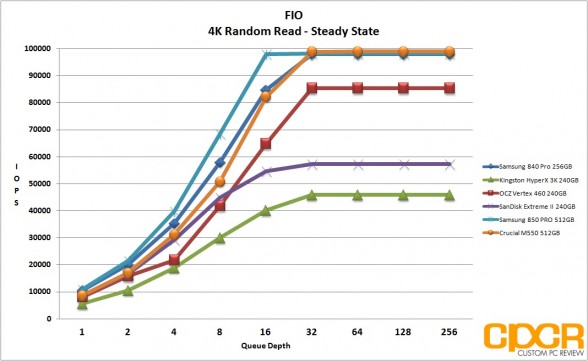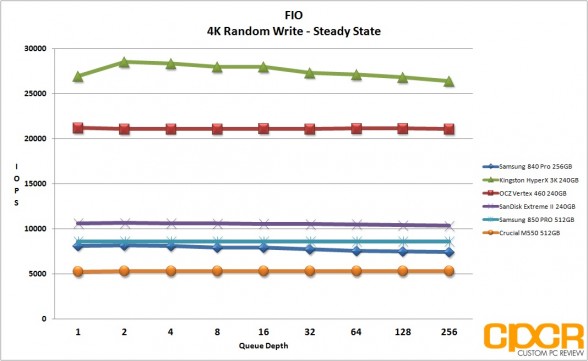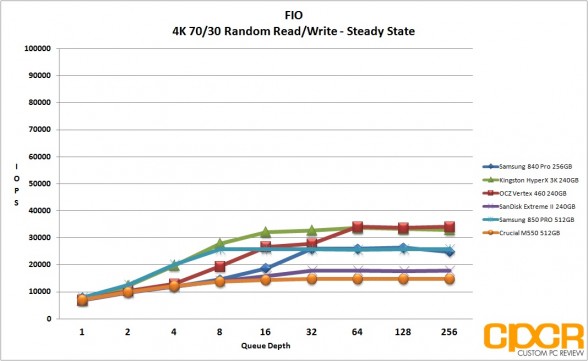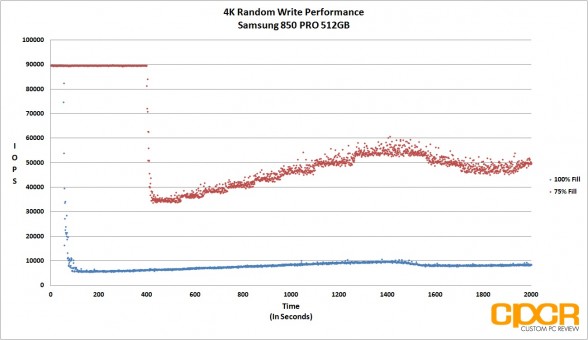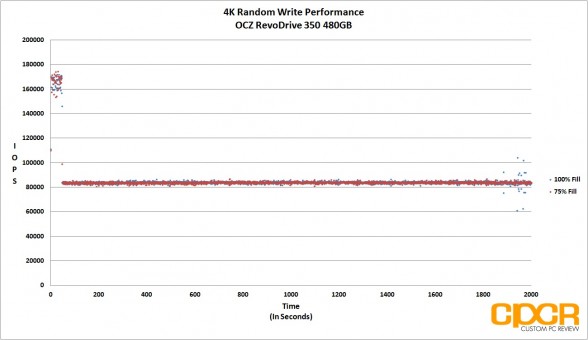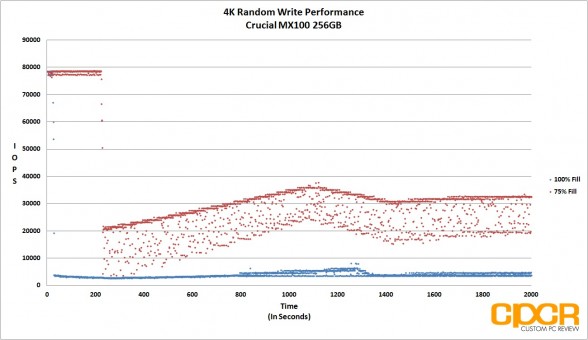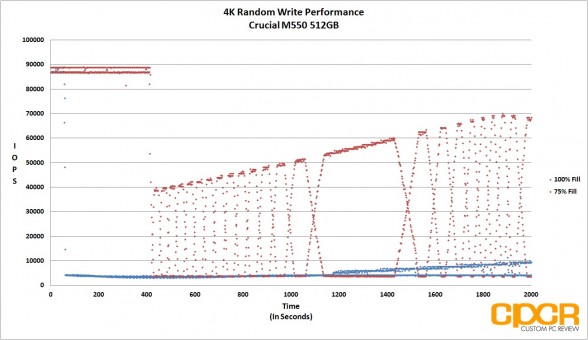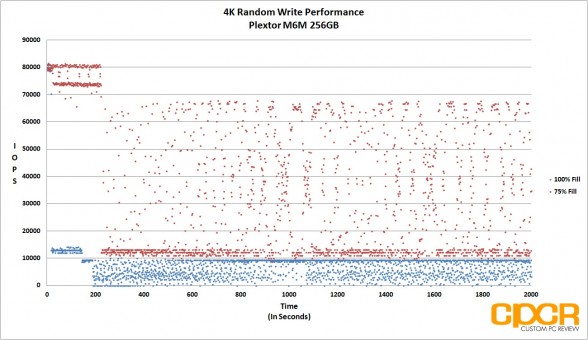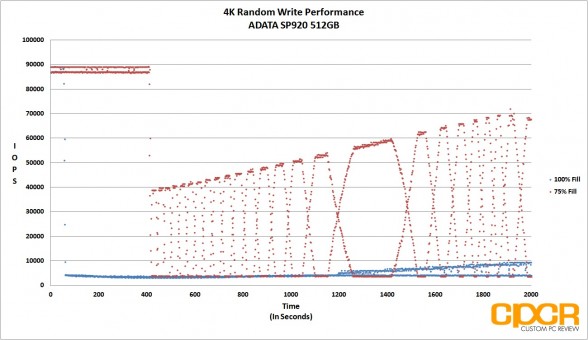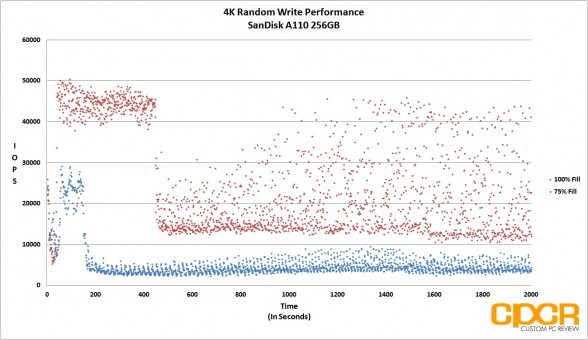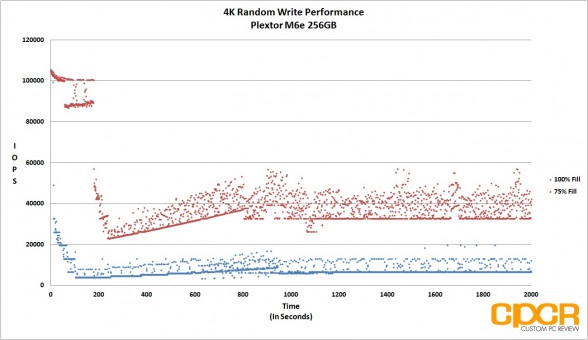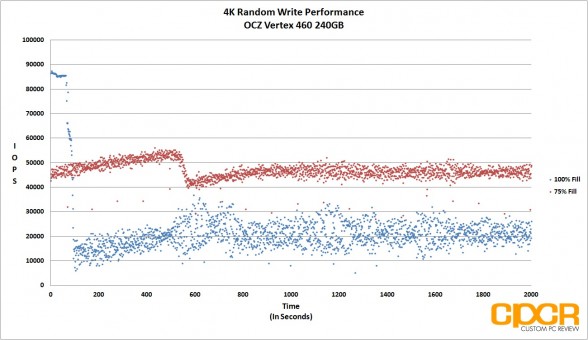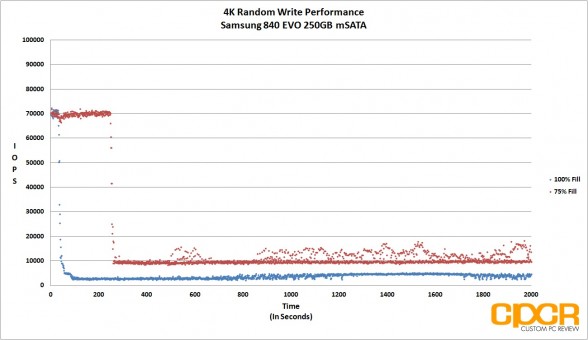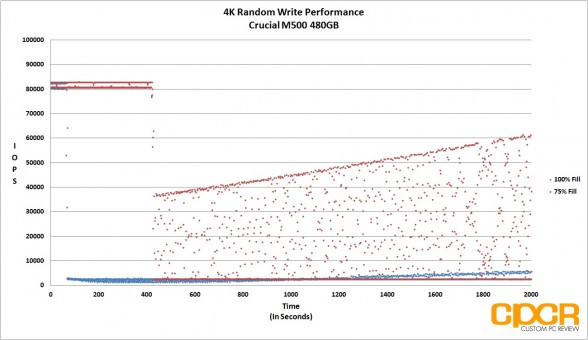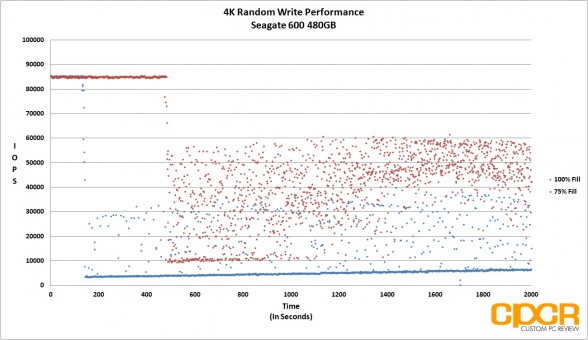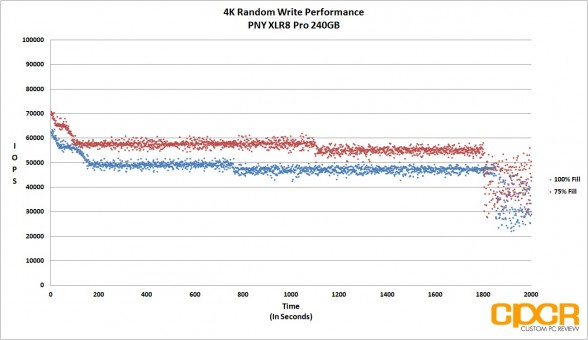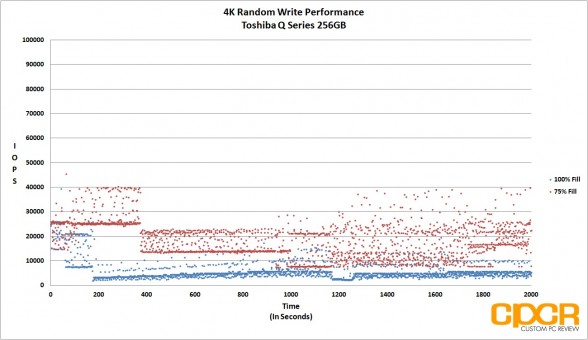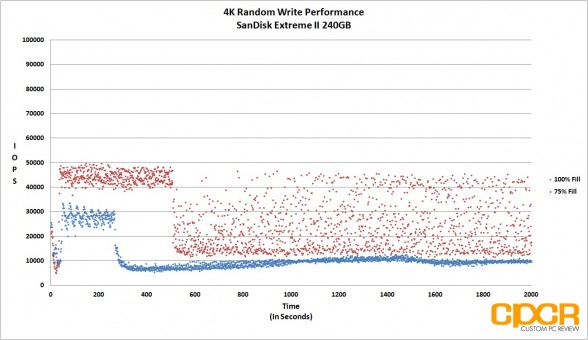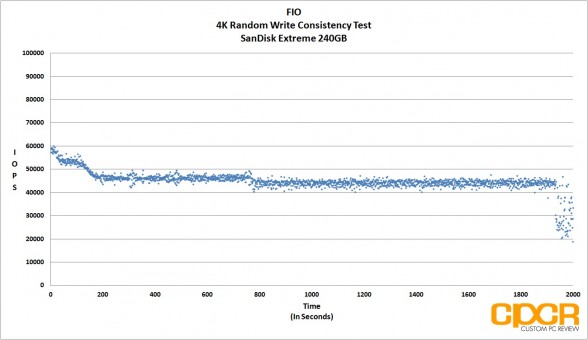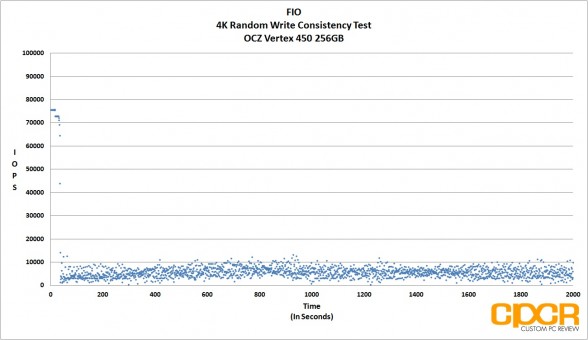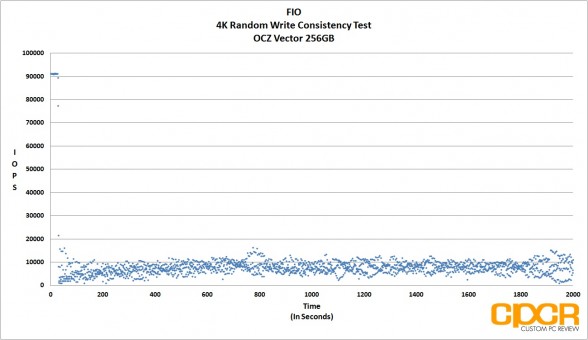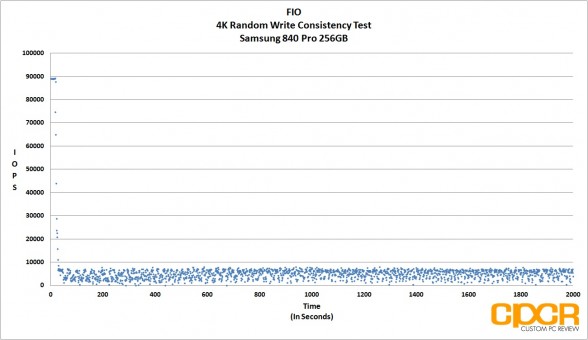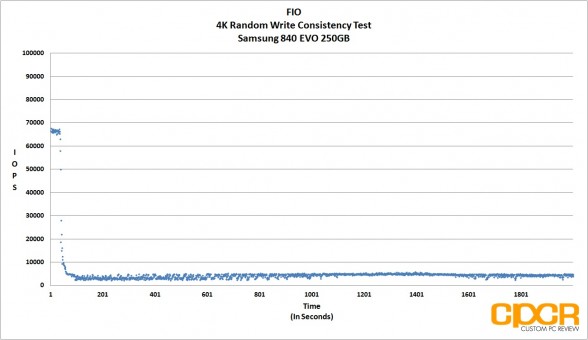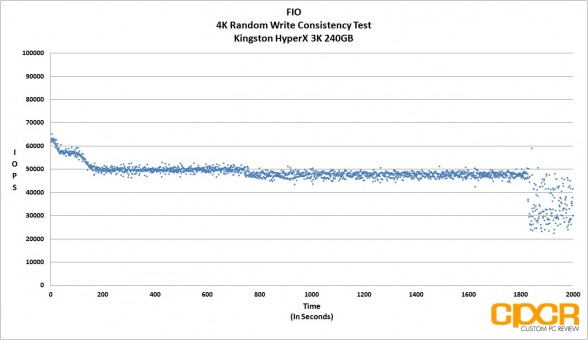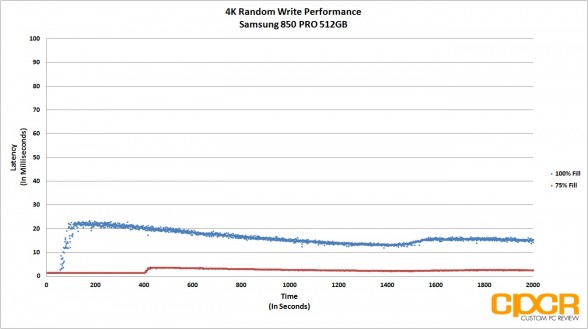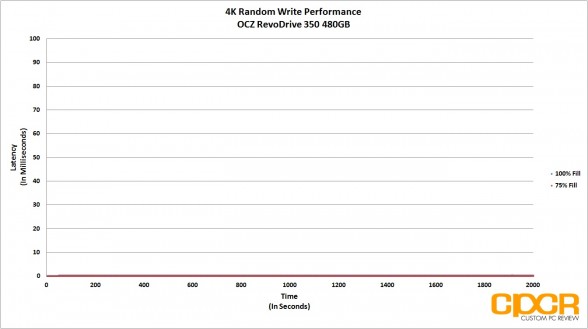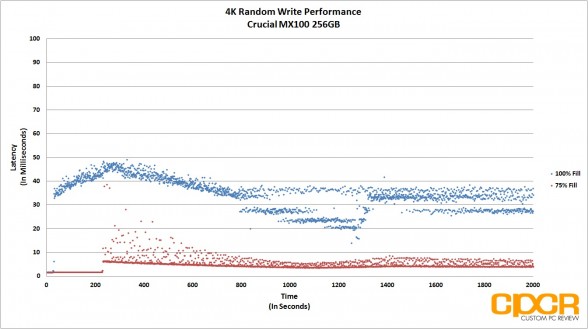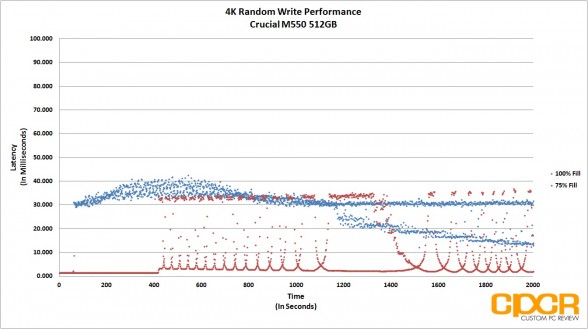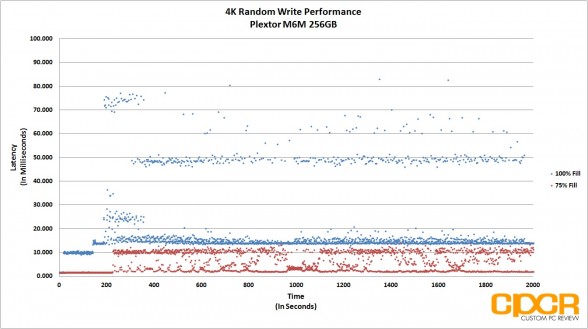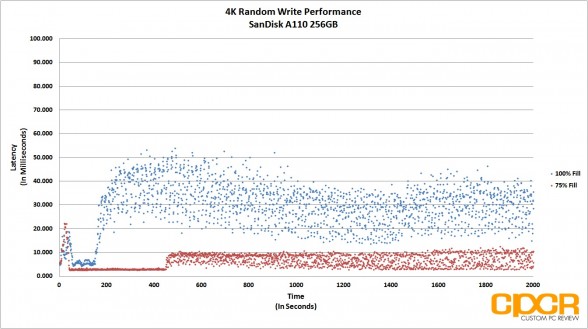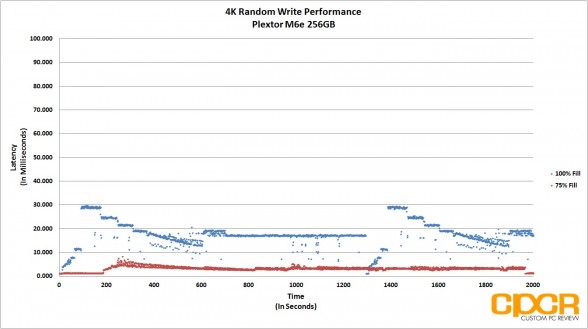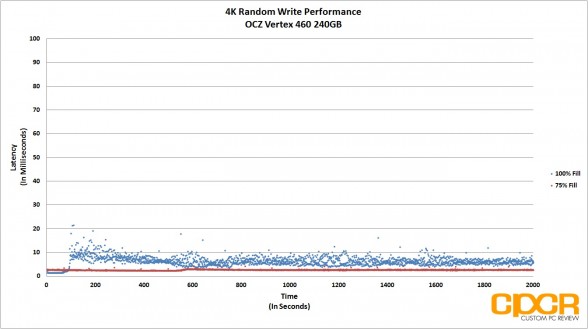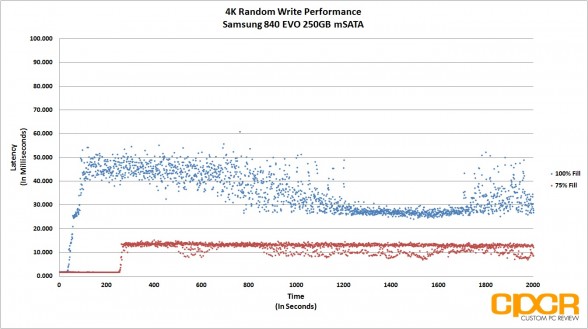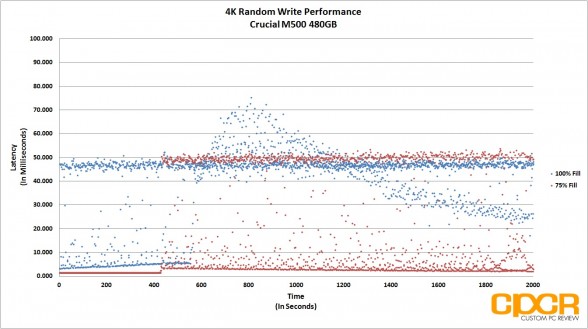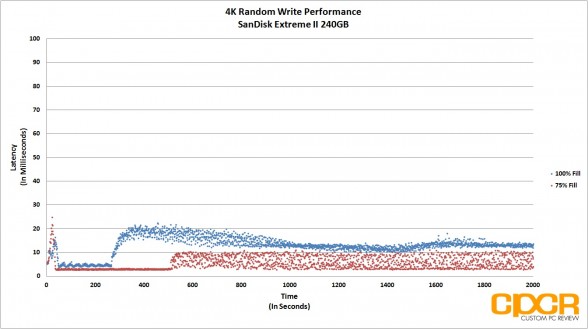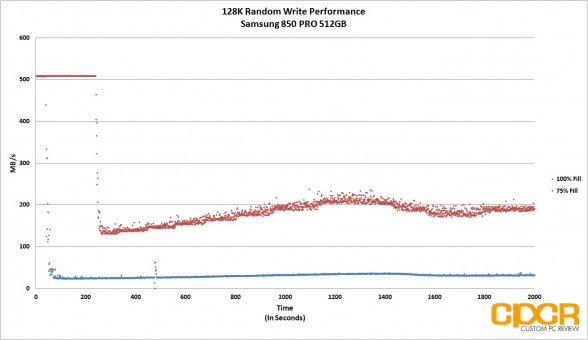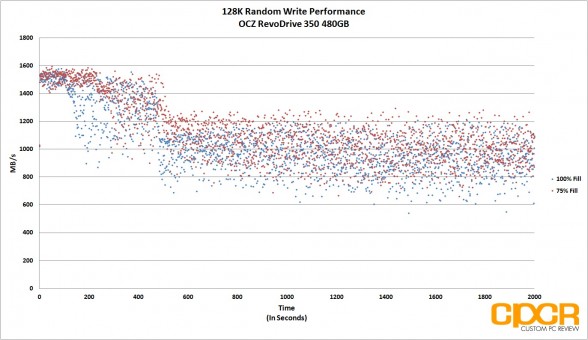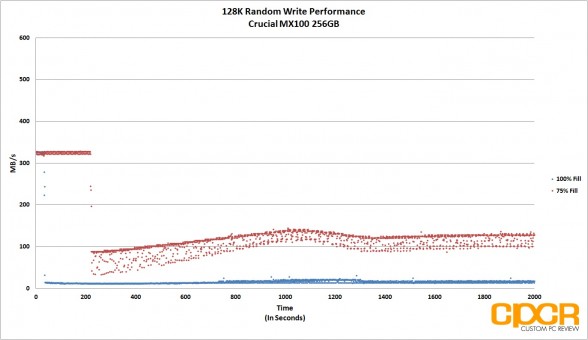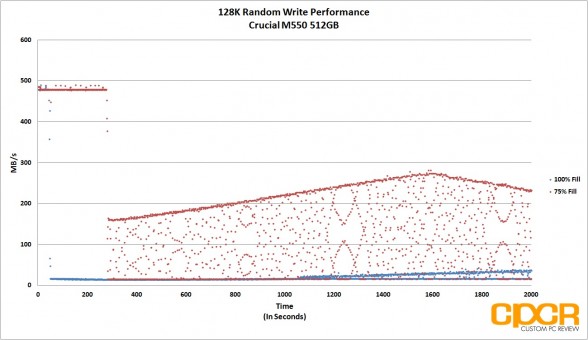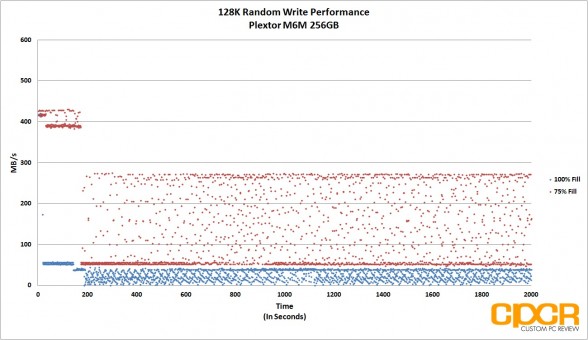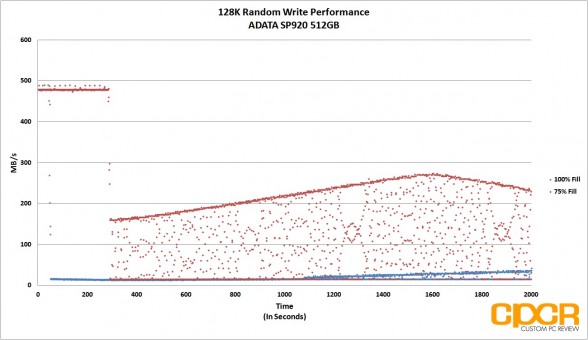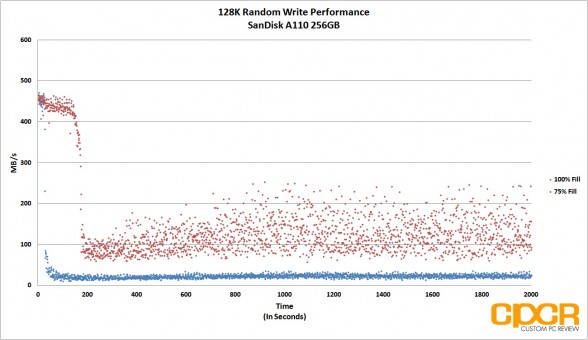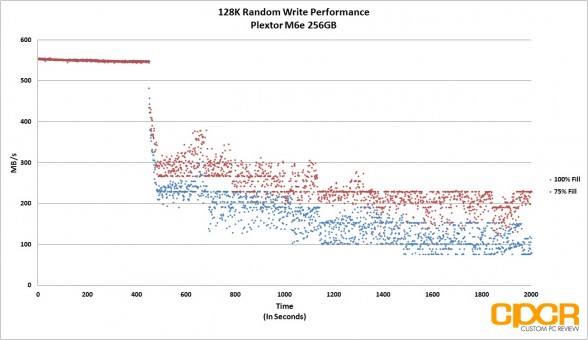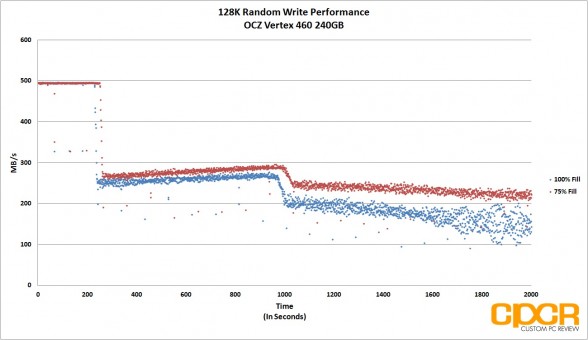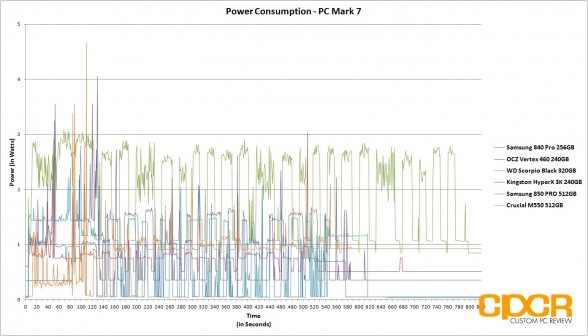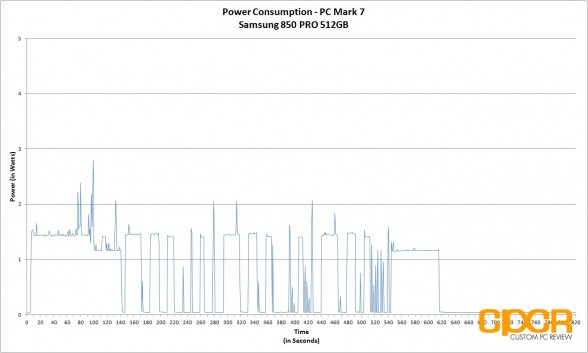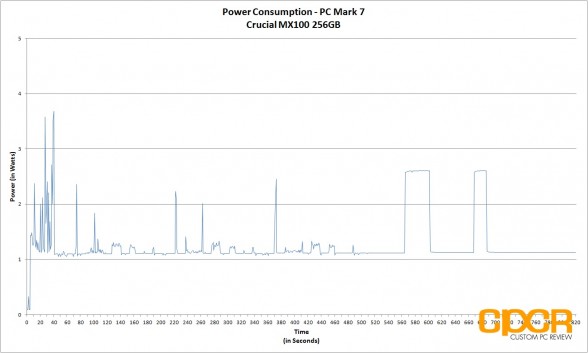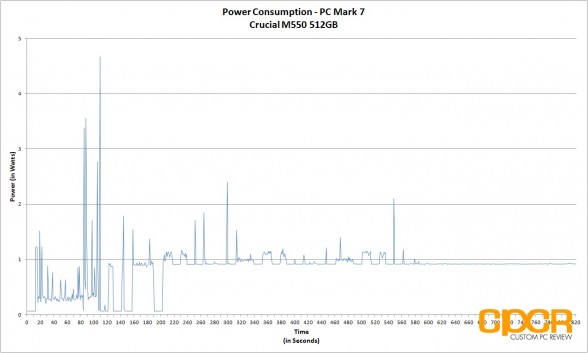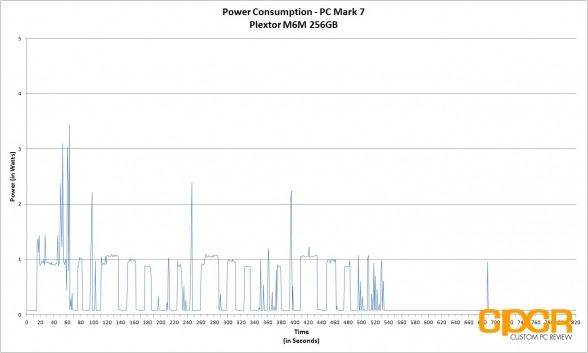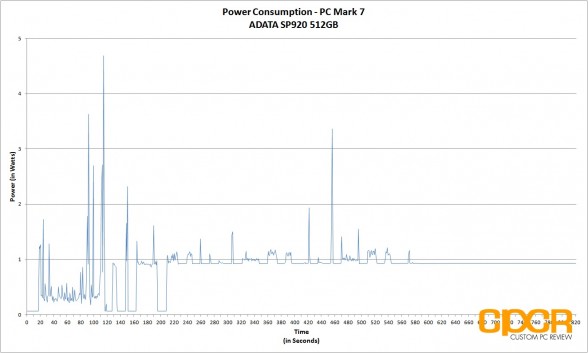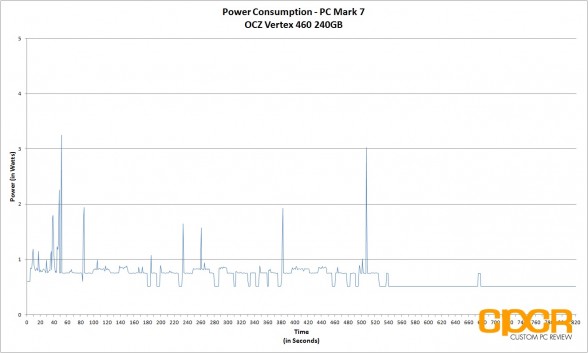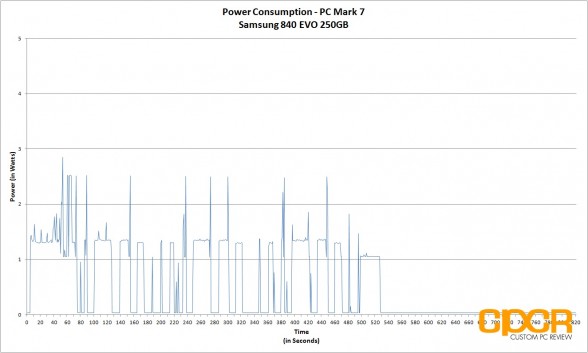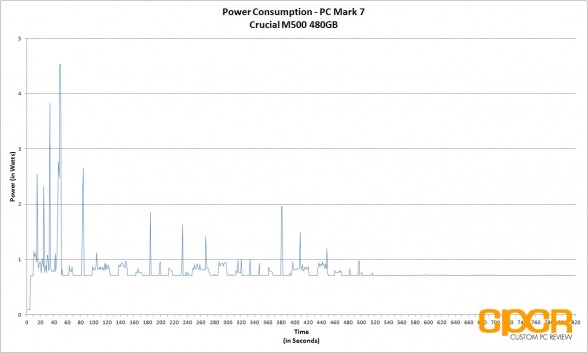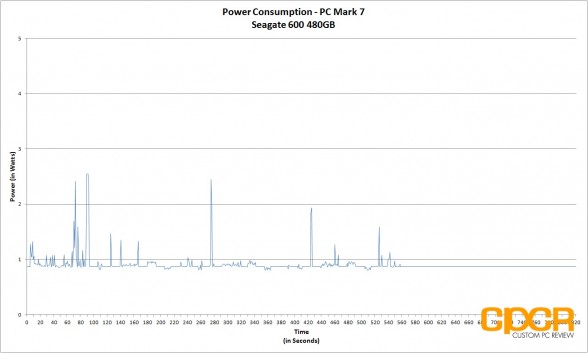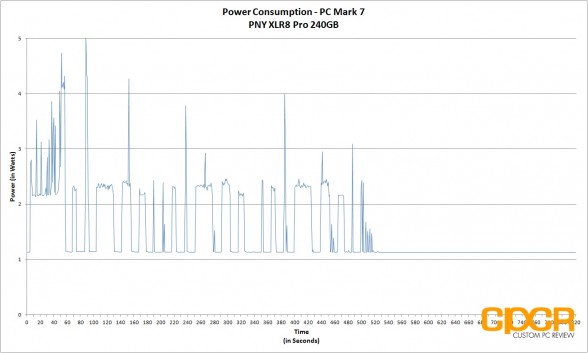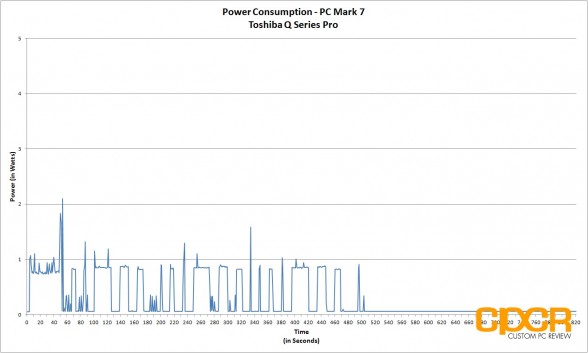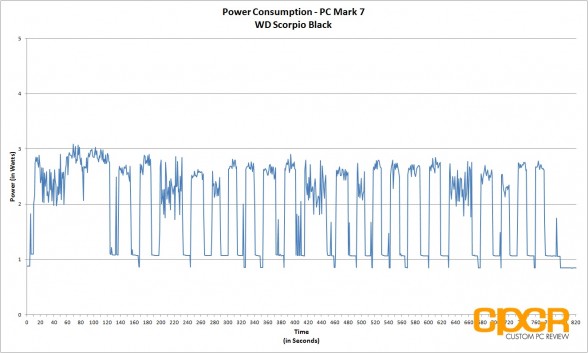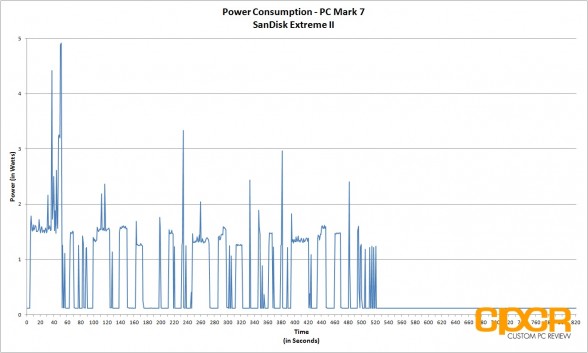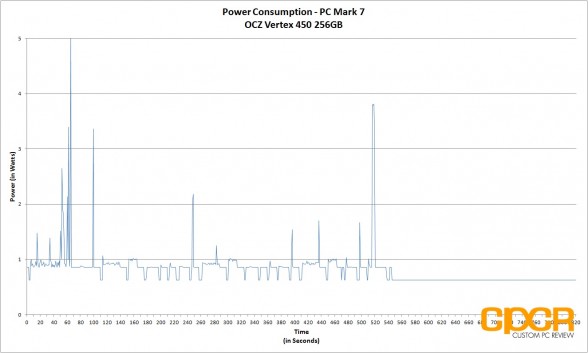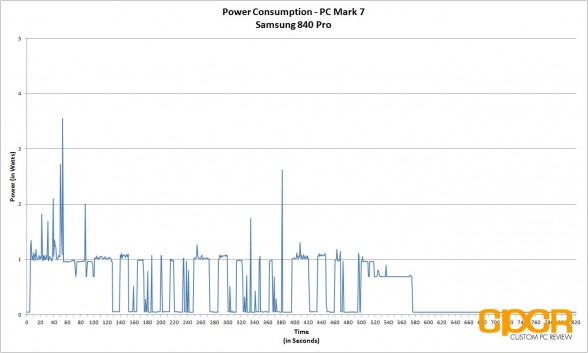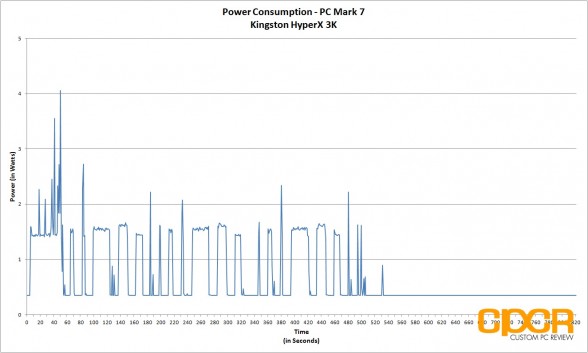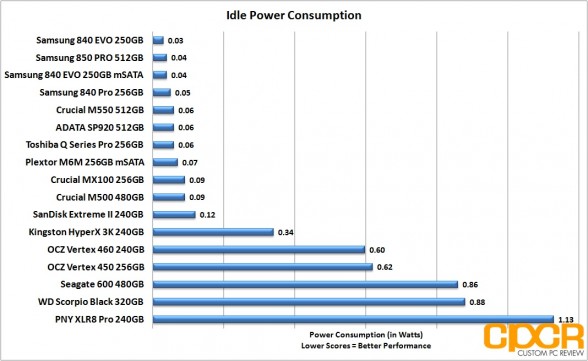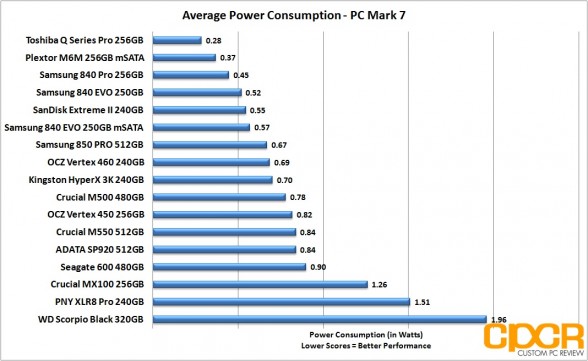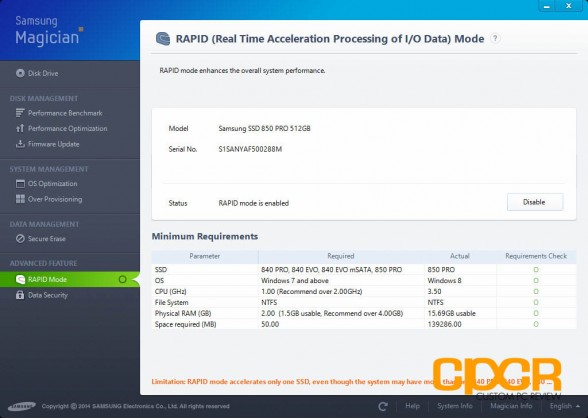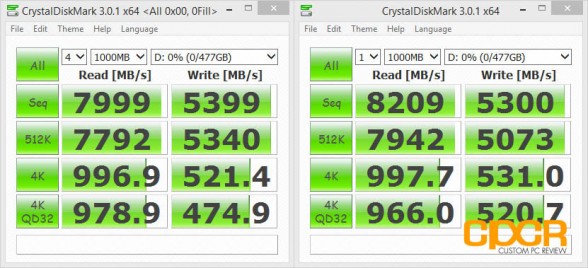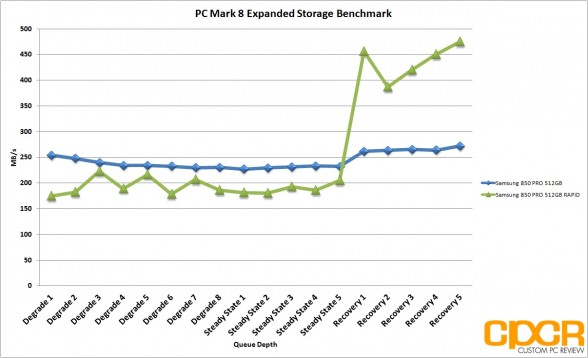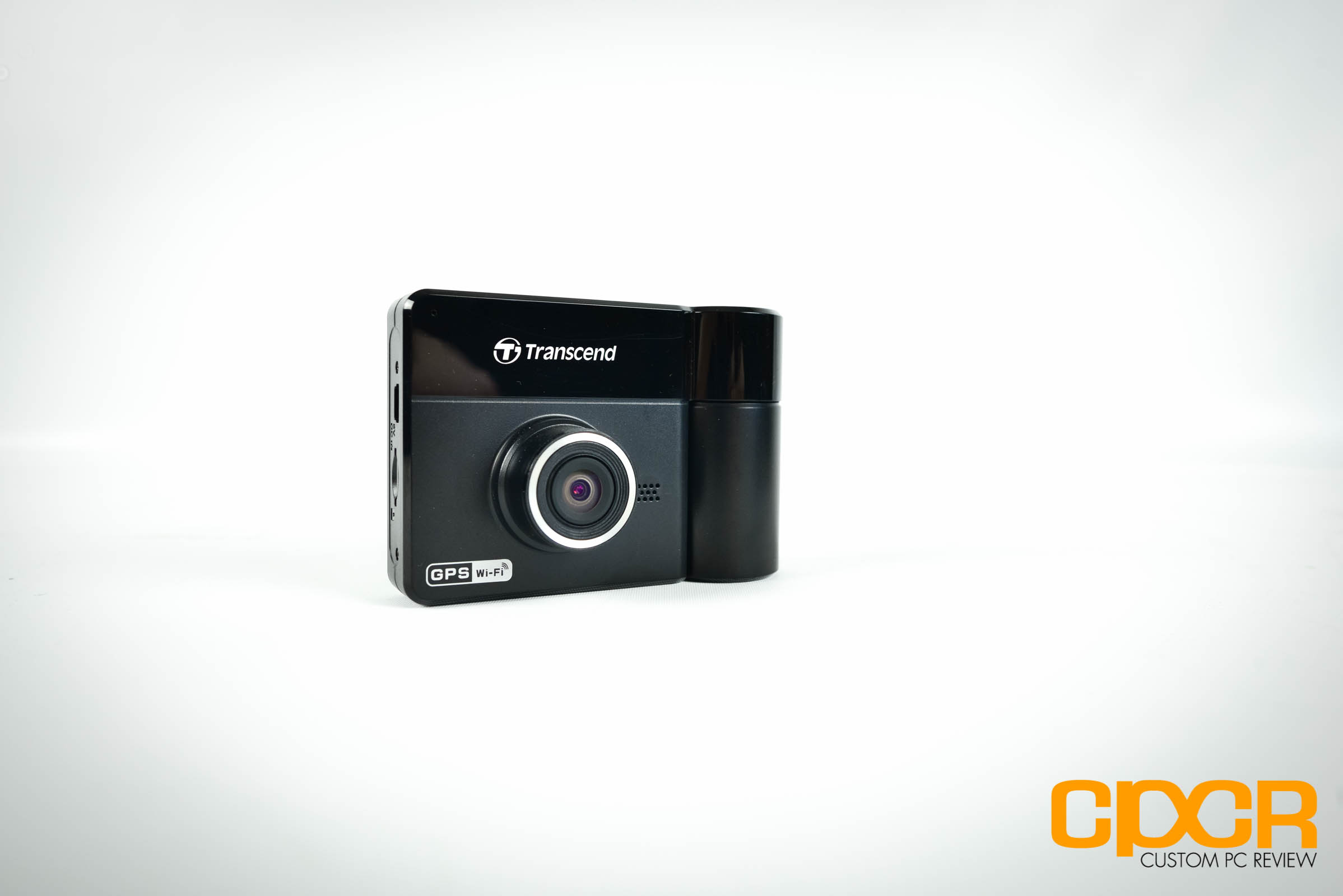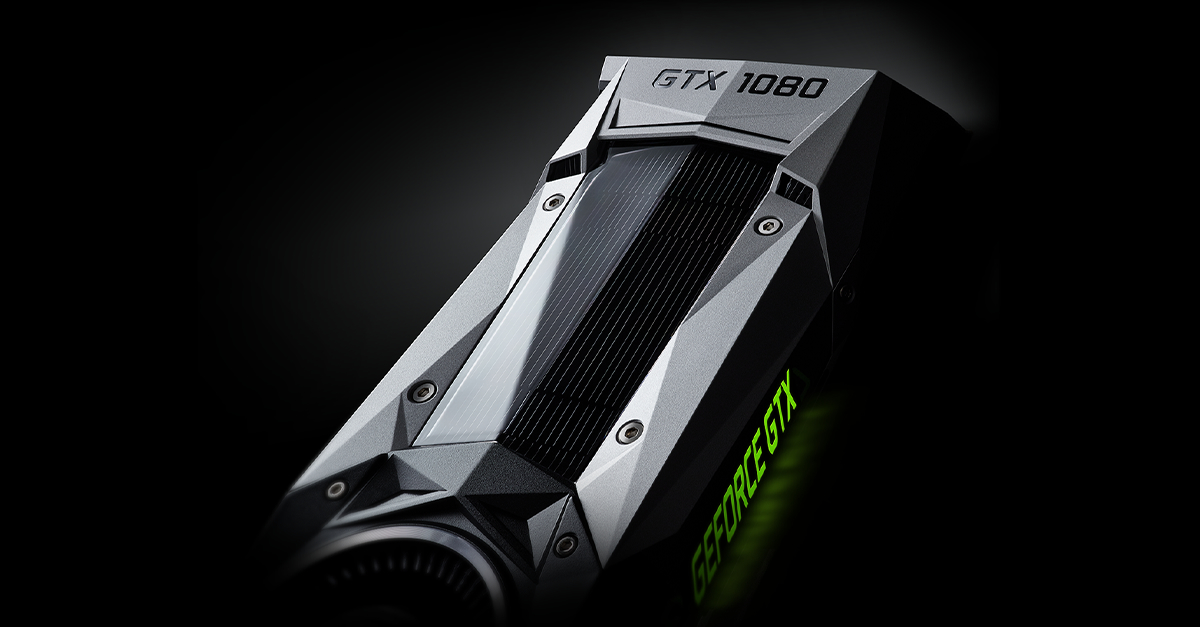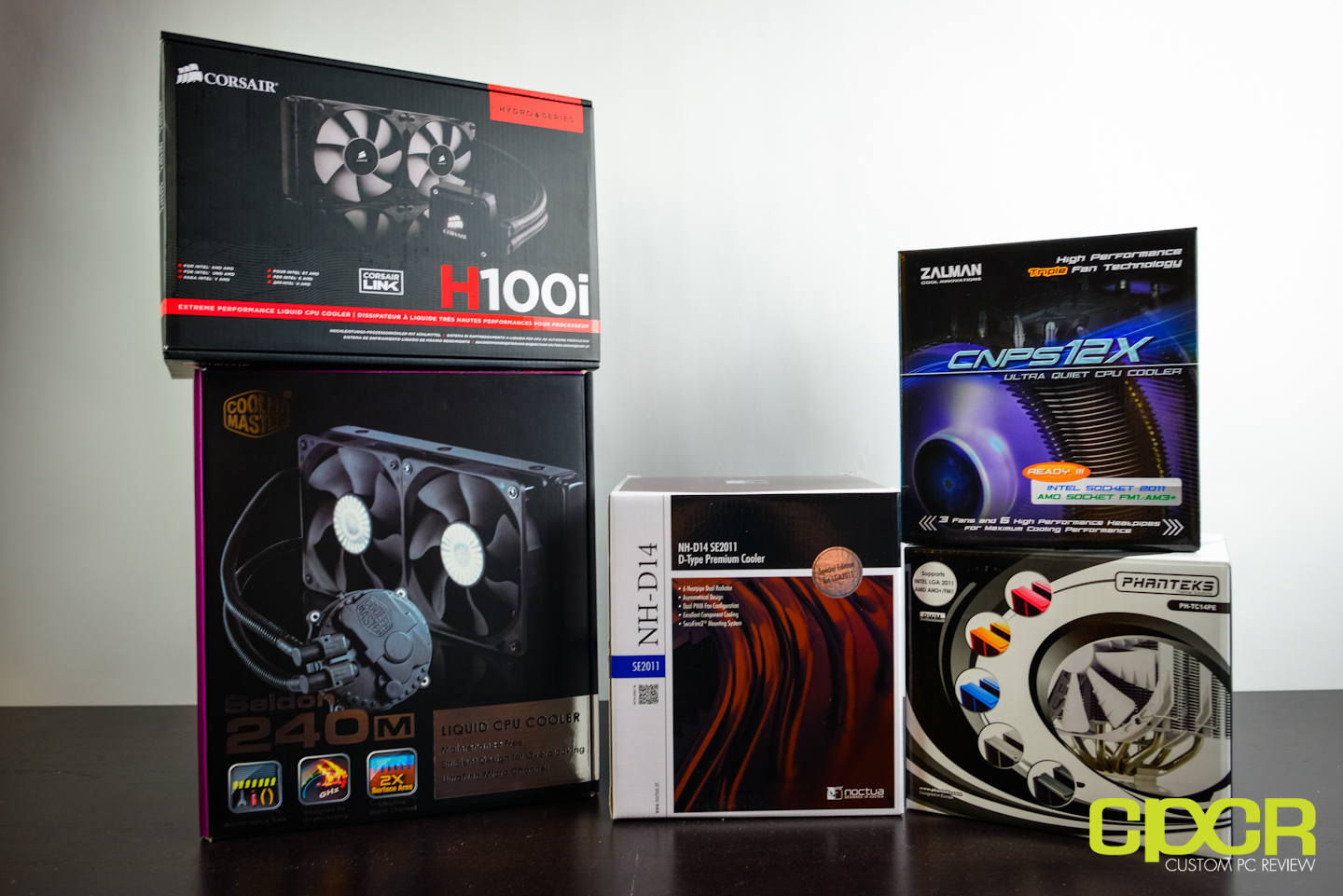[section label=Introduction]
Samsung Goes 3D-VNAND
Although now one of the most well known SSD manufacturers on the market, just four years ago Samsung wasn’t really a name in the consumer SSD market. Despite the fact that Samsung had been one of the pioneers in the SSD industry, until the launch of the Samsung 470 most of their products went directly into the hands of system builders and OEMs while guys like Intel, OCZ and Crucial dominated the retail space. In the past two years however, Samsung has drastically changed their focus onto the retail market, quickly transforming themselves from being exclusively an OEM solutions provider into one of the most innovative and as disruptive forces in the retail SSD industry.
One of biggest reasons for this transformation was due several key product launches, one of which includes the famous Samsung 840 PRO launched a little less than two years ago. At the time, the Samsung 840 PRO, which we reviewed back in 2012, took the consumer SSD market by storm with its fast performance, top notch Samsung reliability and reasonable cost. Despite the fact that the Samsung 840 PRO was released almost 2 years ago, it’s still highly regarded as one of the top performance SSDs on the market.
That said, two years is quite a long time for any piece of technology and this time around Samsung is once again disrupting the SSD industry with their successor to the Samsung 840 PRO, the Samsung 850 PRO.
Samsung 850 Pro Specifications
| Manufacturer | Samsung | Samsung | Samsung | Samsung |
|---|---|---|---|---|
| Model | 850 PRO | 850 PRO | 850 PRO | 850 PRO |
| Form Factor | 7mm, 2.5″ SATA | 7mm, 2.5″ SATA | 7mm, 2.5″ SATA | 7mm, 2.5″ SATA |
| Capacity | 128GB | 256GB | 512GB | 1TB |
| Controller | Samsung MEX | Samsung MEX | Samsung MEX | Samsung MEX |
| NAND | Samsung 32 layer 3D V-NAND | Samsung 32 layer 3D V-NAND | Samsung 32 layer 3D V-NAND | Samsung 32 layer 3D V-NAND |
| Sequential Reads | 550 MB/s | 550 MB/s | 550 MB/s | 550 MB/s |
| Sequential Writes | 470 MB/s | 520 MB/s | 520 MB/s | 520 MB/s |
| 4K Random Read | 100,000 IOPS | 100,000 IOPS | 100,000 IOPS | 100,000 IOPS |
| 4K Random Write | 90,000 IOPS | 90,000 IOPS | 90,000 IOPS | 90,000 IOPS |
| Interface | SATA 3 6Gb/s | SATA 3 6Gb/s | SATA 3 6Gb/s | SATA 3 6Gb/s |
| Warranty | 10 Years, 150 TBW | 10 Years, 150 TBW | 10 Years, 150 TBW | 10 Years, 150 TBW |
Today we have the opportunity to be among the first to review the Samsung 850 PRO, Samsung’s latest flagship consumer SSD which like the Samsung 840 PRO is targeted towards media professionals, gamers, enthusiasts and business professionals. It’ll come in capacities of 128GB, 256GB, 512GB, and 1TB with the 1TB capacity being a first ever for the Samsung’s flagship line of consumer SSDs.
The Samsung 850 PRO is controlled by the same 8 channel Samsung MEX controller first introduced on the Samsung 840 EVO which we reviewed last year. While the controller is certainly new for the PRO line, the most exciting difference between the Samsung 840 PRO and the Samsung 850 PRO is the switch to Samsung’s latest 40nm 32-layer 3D V-NAND. Samsung claims that the new 3D V-NAND is capable of double the density, double the write performance, double the endurance, and 40% lower active write power consumption compared to current generation 20nm 2D planar NAND flash – a claim that almost sounds too good to be true.
Because of the improved performance of 3D V-NAND, all of Samsung’s latest drives provide up to 550MB/s sequential reads, 100,000 IOPS 4K random reads, and 90,000 IOPS 4K random writes. The 256GB, 512GB and 1TB drives are also capable of up to 520MB/s sequential writes while the 128GB drive is slightly slower, coming in at 470MB/s sequential writes.
Excited? I am. Let’s take a closer look!
[section label=”A Closer Look”]
A Closer Look at the Samsung 850 PRO 512GB
Here’s a look at the packaging for the Samsung 850 PRO 512GB.
Included in the packaging we get some documentation, some Samsung SSD stickers, and the Samsung 850 PRO itself.
Here’s a closer look at the Samsung 850 PRO. The drive will come in the usual 2.5″, 7mm form factor with practically the same exact metal casing we saw on the Samsung 840/840 PRO.
Like the newer Samsung 840 EVO, the Samsung 850 PRO is held together with only three (but three very annoying pentahex) screws. Opening up the drive, we can see that Samsung is using a half sized PCB for the 512GB model which is done presumably to save on cost.
Here’s a look at the Samsung MEX controller used on the Samsung 850 PRO (Model #S4LN045X01-8030). The Samsung MEX controller is an 8 channel controller powered by 3x ARM Cortex-R4 cores running at 400MHz. As evidenced by the model number, the MEX controller on the Samsung 850 PRO appears to be the exact same MEX controller used on the Samsung 840 EVO. Currently, very little additional information about the controller has been revealed by Samsung at this time.
For the DRAM cache, Samsung is using either 256MB LPDDR2 for the 128GB model, 512MB LPDDR2 for the 256GB and 512GB models, or 1GB LPDDR2 for the 1TB model. This provides approximately 1MB DRAM cache per GB NAND flash for all models except the 256GB which has 2MB DRAM cache per GB NAND flash.
Here’s a look at the NAND on the Samsung 850 PRO. While the NAND package physically looks no different in comparison to 2D NAND used on previous generation drives, the NAND on the Samsung 850 PRO is Samsung’s latest 40nm 32-layer 3D V-NAND. Unfortunately, we’re not quite sure how many dies Samsung is using per package since Samsung is using two different NAND packages onboard the 512GB Samsung 850 PRO, but we’ve been told that this new 32-layer 3D V-NAND has a die capacity of 86Gb. Total NAND capacity on this drive should be 514GiB. We’ve already reached out to Samsung for more information about the NAND, so further information will be available soon enough.
[section label=”3D V-NAND”]
Samsung’s 3D V-NAND
So if I haven’t made it perfectly clear yet, 3D NAND is really exciting stuff, but why is it so exciting? Well, in order to get to that, let’s first talk about 2D NAND, the challenges we’re facing with 2D NAND today, and then let’s talk about why 3D NAND is the game changer that it is.
2D NAND
Before we begin, let’s talk briefly about 2D NAND and how it works. The basic concept is fairly simple.
Currently, the most predominant form of 2D NAND is based off a design called the floating gate design. As seen on the diagram to the left, the way a floating gate design works is that each cell contains a control gate, an insulated floating gate, and a channel layer (substrate).
In order to program cells, voltage is applied to the control gate, which brings electrons from the channel layer into the floating gate. Once electrons move past the oxide insulation layer, electricity is then removed and the electrons remain in the floating gate, thus programming the cell.
On the other hand, to erase a cell, voltage is applied to the bottom channel layer, which pulls electrons from the floating gate back into the channel, thus erasing the cell.
In order to check the status of a cell, voltage is applied to the control gate which then determines whether or not if there are or aren’t any electrons in the floating gate.
While there’s quite a bit more to it than just that, especially when you add in the complexity of additional bits per cell and more advanced manufacturing technologies, in the interest of keeping things short, those interested in more details can go ahead and check out Samsung’s SSD whitepaper here.
Electron Interference, Patterning, etc.
When SSDs first became seen as a viable medium of storage a number of years ago, it was incredibly expensive. It wasn’t uncommon to see prices for these early drives at $20/GB or more, making even low capacity 32GB drives cost well over $500. Considering stuff like 50nm SLC NAND with only a mere 16Gb die capacity was the norm back then, it meant a whole lot of NAND cells were needed for a very small amount of capacity. This is why SSDs from a number of years ago were generally so pricey.
Since then, SSD manufacturers have managed to significantly reduce the cost of SSDs primarily through shrinking dies and increasing the number of bits stored in each cell (MLC, TLC). While this allows NAND manufacturers to decrease cell size while simultaneously increasing capacity, each time dies are shrunk, both performance and endurance are lowered significantly. For example, Intel/Micron’s 50nm MLC had an endurance rating of 10,000 P/E cycles whereas Samsung’s latest 19nm TLC is believed to have an endurance rating of only ~1,000-1,500 P/E cycles. This is because as cells literally become the size of an electron, it becomes extremely difficult to read electrons in the floating gate. Compound that with inherently more error prone MLC and TLC NAND, the problem of electron interference under 20nm, the increasing cost of new manufacturing technologies to produce finer NAND (patterning), and it’s quite easy to see why continuing to scale down to finer lithographies simply isn’t feasible.
Since it’s extraordinary costly and difficult to continue scaling NAND after 20nm, what can we do? Well, how about let’s just do what every major island city does? Let’s build up! This is where 3D NAND comes in.
3D V-NAND
Samsung refers to their 3D NAND product as 3D V-NAND, which is significantly different in comparison to current generation 2D NAND. Rather than rely on shrinking cells to reduce cost and increase capacity, Samsung is instead moving back to a nice, large 40nm process and stacking cells on top of each other to achieve higher capacities. While theoretically it sounds pretty easy, it’s actually quite a bit more complex.
https://www.youtube.com/watch?v=K7n6b-Cm_Rc
One of the reasons for this complexity is because current floating gate NAND designs can’t simply be turned sideways. Thus in order to produce stackable cells, Samsung had to create a new design to make 3D V-NAND a reality. This new design would be CTF, or Charge Trapped Flash. Unlike a floating gate design, CTF consists of only a control gate, an insulator, and a channel layer (substrate). Rather than trapping electrons in a floating gate, electrons are trapped within the insulator, which makes the design a lot simpler. Of course, the biggest benefit of the CTF design is that it an be stacked which will allow Samsung to quickly scale capacities by adding additional layers.
By using the 3D CTF design, Samsung is able to kill several birds with one stone as both patterning and electron interference become a non-issue. Additionally, as there’s significantly more surface area in a 40nm 3D cylindrical shaped design than a 19nm 2D planar design, there’s more area inside the insulator layer for electrons to reside thereby improving both performance and endurance despite less reliance on advanced ECC/DSP algorithms on the controller.
Probably the most exciting aspect of 3D V-NAND is the fact that there’s no patterning limitations on V-NAND so the same manufacturing equipment used to produce today’s 32-layer V-NAND can also be used to produce tomorrow’s 48-layer, 64-layer, 92-layer, etc. V-NAND. Because of this, Samsung expects their 3D V-NAND dies to scale up to 1Tb. Considering today’s 128Gb dies are already capable of reaching 1TB on a single SSD, an 8x increase in die capacity could theoretically give us 8TB SSDs within the next 3 years!
[section label=”Test Setup”]
Haswell Test Bench
As of October 5, 2013, we’ve upgraded our storage testing system to a Z87/Haswell testing platform. All SSDs used for comparison here have been updated to the latest firmware as of October 2013. Performance tests from storage reviews prior to that date should not be compared to our latest reviews.
| System | CyberPowerPC Gamer Xtreme 4200 |
|---|---|
| CPU | Intel Core i7 4770K |
| Motherboard | ASUS Z87-A |
| Memory | Kingston HyperX Genesis 16GB DDR3 2133MHz |
| Graphics | Intel HD4600 Graphics |
| Storage | OCZ Vertex 4 256GB |
| Power Supply | Corsair HX650 |
| Case | HSPC High Speed Tech Station |
| Optical Drive | ASUS OEM DVD Drive |
| Operating System | Windows 8 64 bit & CentOS 6.4 |
Special thanks to CyberPowerPC, Kingston, OCZ Technology and HSPC for sponsoring our test bench!
Crystal Disk Info
Samsung 850 PRO 512GB
Today we’ll be reviewing the Samsung 850 PRO 512GB with pre-production firmware EXM01B6Q. Similar to the Samsung 840 EVO, the Samsung 840 PRO supports all the latest features such as SMART monitoring, NCQ (Native Command Queueing), TRIM, and DevSleep. Samsung claims that their DevSleep mode is the most efficient out there, drawing only 2mW with the mode is activated.
The Samsung 850 PRO will also feature 256-bit hardware encryption and SED (Self Encrypting Drive) features including TCG Opal 2.0, IEEE-1667, and Microsoft Bitlocker eDrive. Security features can be accessed via the Samsung Magician software utility, which explains in detail each security feature and how to enable it.
[section label=”ATTO Disk Benchmark”]
Samsung 850 PRO 512GB Performance
ATTO Disk Benchmark v2.46
ATTO Disk Benchmark is one of the industry’s oldest and most popular benchmarks for testing disk read/write speeds. This benchmarks allows read and write testing using predefined block sizes and gives us a good idea of read/write speeds with different sized files. Most SSD manufacturers prefer using this benchmark when advertising SSDs as it tests using compressible data, which tends to yield best performance.
Performance Analysis
In ATTO Disk Benchmark, the Samsung 850 PRO 512GB gets off to a very good start, pulling 563MB/s sequential reads and 534MB/s sequential writes.
[section label=”AS SSD”]
AS SSD Benchmark
AS SSD is a very commonly used benchmark used to measure SSD performance in a number of categories. Here, tests are run using incompressible data at QD1. It also outputs a final score at the conclusion of the test based off the read and write performance of the drive.
Performance Analysis
AS SSD performance is quite good as well with sequential reads and writes around the 500MB/s mark. 4K performance is decent too, with read/write performance of 28/114MB/s.
[section label=”Crystal Disk Mark”]
Crystal Disk Mark 3.0.1 x64
Crystal Disk Mark is another popular benchmark which allows us to measure both sequential read/write speeds as well as random read/write speeds. With this benchmark, tests can be run using both random fill (incompressible data) and 0 fill (compressible data). Realistically in typical computer usage scenarios, data being transferred will consist of a mixture of both incompressible and compressible data.
Performance Analysis
Crystal Disk Mark mirrors our results in AS SSD, except this time at QD4.
[section label=”PC Mark 7″]
PC Mark 7 Storage Benchmark
The PC Mark 7 storage benchmark evaluates the SSD under many different real world environments such as gaming, multimedia editing, etc. This closely represents the SSD’s performance under real world situations.
Performance Analysis
In PC Mark 7, the Samsung 840 Pro held the top spot as the fastest SATA drive for the past two years, and as fitting for a drive designed to be the successor to the Samsung 840 Pro, the Samsung 850 PRO has now replaced the Samsung 840 Pro as the fastest SATA drive on our charts.
[section label=”PC Mark 8″]
PC Mark 8 Expanded Storage Benchmark
With the introduction of PC Mark 8 2.0.228, Futuremark added the option for an Expanded Storage Benchmark which is literally designed to bring any storage system its absolute limits. The new PC Mark 8 Expanded Storage Benchmark takes around 24 hours to run and for our purposes, we’ll be using the consistency test which measures performance consistency, degradation tendency, and recovery speed of a storage system.
Consistency Test
Full details on the consistency test can be found in the PC Mark 8 Technical Guide here. For the more simplified version, the test is basically a near 24 hour, five phase benchmark – three of which we’ll be reporting on in our results below.
- Phase 1 is a precondition phase designed to “dirty” the drive with random data. The entire drive is filled twice to the capacity of the drive.
- Phase 2 is a degrade phase where the drive is hammered with tons of random data followed by a performance test run. This is done 8 times.
- Phase 3 is the steady state phase where the drive is once again hammered with tons of random data followed by a performance test run. This is done 5 times.
- Phase 4 is the recovery phase where the drive is given 5 minutes to rest followed by a performance test run. This is done 5 times.
- Phase 5 is the clean up phase where the drive is simply secure erased.
Performance Analysis
In the extremely punishing PC Mark 8 Expanded Storage Benchmark, the Samsung 850 PRO easily defeats the competition by a fair margin. Surprisingly in this benchmark, the Samsung 840 Pro was only able to offer half the performance of the Samsung 850 PRO which suggests Samsung’s main focus for the 850 PRO isn’t just in fast burst performance, but long term steady state performance as well.
[section label=”FIO – FOB”]
FIO (Flexible I/O Tester)
FIO, which stands for Flexible I/O Tester, is basically what its name says – a flexible I/O tester / I/O workload generator. Whereas all the benchmarking tools we’ve used previously are fantastic, easy to use benchmarking tools that provide a good snapshot of SSD performance, they do lack a lot of versatility, especially for more complex and in-depth operations such as custom queue depths, block sizes, test run times, etc. While the testing that follows may not pertain to typical consumer usage, they do help give us a much more in-depth look at each individual product’s strengths and weaknesses when they’re pushed to the limits.
FIO – FOB (Fresh Out of the Box) Testing
When SSDs are brand new and Fresh Out of the Box, they’re generally able to perform at or outperform their advertised speeds, but unlike traditional hard drives, performance on SSDs begin to degrade over time as they become more and more used. This is because while SSDs are new, all bits on the SSD are empty, so they can instantly be programmed with data. However, once data gets programmed in, even if it’s deleted in the filesystem the actual data will still stay programmed on the NAND itself unless some sort of garbage collection routine comes in to wipe the data. Unfortunately, in order to write new data onto “dirty” NAND, the NAND needs to go first through an erase cycle to erase the old data before a program cycle can happen to program new data, which as you may imagine takes more time than just a simple program cycle. As this only happens when writing new data onto the SSD, you’ll generally see less performance degradation on reads and more performance degradation on writes.
For our FOB testing, we run a secure erase on the SSD then run each test sans any preconditioning. This will provide us with the highest level of performance the SSD is capable of and is likely never to be seen ever again once the SSD goes into a used state.
Our testing will include 4K read testing, 4K write testing, and 4K 70/30 read/write mix testing at queue depths of 1,2,4,8,16,32,64,128,256. The reason we’ve also included 4K 70/30 read/write mix testing is simply because most real world workloads will always fall somewhere between 0% write and 100% write rather than one or the other. Since client usage is much more read heavy, we’ll be using the 70/30 read/write mix.
For general client usage, performance will fall somewhere between queue depths of 1-4 whereas servers and other enterprise applications will easily see queue depths of 32 or greater.
Performance Analysis
Here’s a look at the 4K performance for the Samsung 850 PRO in the FOB state. Given the fact that the drive is capable of 99,000 IOPS 4K random reads, 90,000 IOPS 4K random writes, and 95,000 IOPS with a 4K mixed workload, I’d say we’re doing pretty well here. Let’s see what happens when we put the drive through a more intense workload.
[section label=”FIO – Steady State”]
FIO – Steady State Testing
After prolonged use of an SSD, it will reach “steady state” where performance levels off to a minimum level. The FOB state is the “best case scenario” for SSD performance while “steady state” is going to be your worst. Here, we ran the exact same set of benchmarks we just completed in the FOB state; except this time around, we’ll be preconditioning the drive by filling 100% of the drive’s LBAs with two sequential passes of 128k data followed by hammering the drive for six hours with 4K random data prior to actual testing.
Performance Analysis
Moving into steady state, 4K random read performance was practically unfazed as the Samsung 850 PRO managed to pull 98,000 IOPS without issue. Unfortunately, 4K random write performance and mixed workload performance suffered the greatest with the drive struggling to push past 8,500 IOPS 4K random reads and 26,000 4K 70 read/30 write mixed workload. That said, it’s not very surprising as the Samsung 850 PRO is not over-provisioned with additional spare area out of the box.
[section label=”FIO – 4K Random Write Consistency”]
FIO 4K Random Write Consistency Testing
Another one of the benefits of testing with FIO is the flexibility of running consistency tests, which is one of the most important metrics when considering SSDs going forward. Looking at the results of our benchmarks such as ATTO Disk Benchmark and Crystal Disk Benchmark, we can see that practically every top tier SSD is capable of saturating SATA 6Gb/s in the FOB state. However, what really differentiates these SSDs is their ability to hold a certain level of performance even after extended periods of use.
For our consistency testing, we used a fairly standard method, which includes both filling up 75% of capacity as well as 100% capacity twice with sequential 128k data followed by the actual test itself, which is simply running 4K random writes at a queue depth of 32. By recording the IOPS every second for 2,000 seconds, we’re able to get a good look at what kind of performance can be expected when the drive is relatively new, when it’s heading towards steady state, and when it’s actually in steady state.
Performance Analysis
Looking at our 4K random write trace, we can see that Samsung definitely did quite a bit of work on significantly improving write consistency as groupings were extremely tight especially with the drive filled at 100%. Taking a step back to 75% fill, performance consistency is slightly worse however, actual performance improved substantially.
Considering the Samsung 850 PRO just got wrecked in 4K writes earlier, those with heavy write workloads are encouraged to over-provision the drive for best performance.
[section label=”FIO – 4K Random Write Latency”]
FIO 4K Random Write Latency Testing
Another metric that’s becoming increasingly important in SSDs is its ability to keep latency low despite being subjected to a heavy workload. Even if a SSD were capable of ultra high and ultra consistent IOPS performance, if latency were high, users would still feel that the drive is slow. Ideally, SATA SSDs should always be capable of latencies under 50ms, even during heavy workloads.
For latency testing, we’ll be using the exact same testing parameters as IOPS consistency testing, except instead of recording IOPS every second, we’ll be recording latency.
Performance Analysis
Latency was extremely good, so there really isn’t too much to worry about here. The Samsung 850 PRO kept latencies under 30ms in both 75% and 100% fill.
[section label=”FIO – 128K Random Write”]
FIO 128K Random Write Consistency Testing
In addition to testing 4K random write consistency, we’ll also begin to test for 128K random write consistency to see how well a SSD is able to hold itself to a level of performance when getting hammered with larger file transfers.
For 128K random write consistency testing, we won’t be preconditioning the drive with two sequential passes of 128K data like in our 4K random write consistency testing since 128K data can easily fill up the drive well within our 2,000 second run.
Performance Analysis
Moving on to 128K random writes, the Samsung 850 PRO was once again fairly slow at 100% fill with steady state performance at a fairly consistent, but fairly low 25MB/s. Switching it up to 75% fill greatly improves performance as the additional spare area allows the drive to recover to ~200MB/s.
[section label=”Power Consumption”]
Samsung 850 PRO 512GB Power Consumption
Previously, our power consumption analysis only tested for idle and maximum load power consumption, but we felt that this was a bad way to accurately measure power consumption. The reason for this is because SSDs tend to be bursty while in operation and will spike in power usage, but only for very short periods of time. As such, many of our SSDs appeared to have even higher power consumption than traditional hard drives, which is untrue.
In order to better represent a drive’s power consumption, our solution was to run a test closer to the real-world and record a trace of the exact power consumption during testing. Since PC Mark 7 has been recognized by the industry as a fantastic real-world benchmark, we’ll be recording the drive’s power consumption while running the benchmark.
All tests below are measured by our B&K Precision 5491B Bench Multimeter tapped directly into the 5v line running from the power supply to the drive. All testing here is conducted with “HIPM (Host Initiated Power Management)/DIPM (Device Initiated Power Management)” enabled and “AHCI Link Power Management – Adaptive” set to 0 milliseconds for maximum power efficiency.
Performance Analysis
Samsung SSDs have always been among the most power efficient drives on the market and despite the transition to 3D V-NAND, the Samsung 850 PRO continues that trend.
Idle power draw came in at a mere 0.04w, making it one of the most power efficient drives at idle considering the only other drives to achieve such low power draw at idle are the Samsung 840 EVO 250GB and the Samsung 840 EVO 250GB mSATA – both of which are significantly lower capacity than the Samsung 850 PRO tested today.
Load power draw on the other hand was slightly higher compared to older Samsung drives with average power consumption coming in at around 0.67w. That said, the Samsung 850 PRO is still among the most power efficient drives on the market thanks to its aggressive power management algorithms.
[section label=”RAPID Mode Revisited”]
RAPID Mode Revisited
With the introduction of the Samsung 840 EVO last year, Samsung also unveiled RAPID (Real-time Accelerated Processing of I/O Data) mode, which was a feature included in Samsung’s Magician utility that allowed users a quick, easy and seamless way to take advantage of unused system resources to improve storage performance.
When RAPID mode was unveiled last year, the software was limited to only up to one GB of memory, but with the new Samsung Magician 4.4 utility (available with launch of the Samsung 850 PRO), RAPID mode will now capable of taking advantage of up to 4GB of system memory for users with 16GB or more system memory. As we received an advance copy of the Samsung Magician 4.4 beta, we’ve decided to revisit RAPID mode with the Samsung 850 PRO.
Crystal Disk Mark 3.0.1 x64
Performance Analysis
Clearly, the combination of an updated RAPID mode and the new Samsung 850 PRO can achieve some phenomenal performance. At both queue depth 1 and 4, the combination yielded a *insert expletive here* amazing 8GB/s+ sequential reads and 5.3GB/s+ sequential writes. 4K performance was equally phenomenal at 1GB/s 4K reads and 500MB/s 4K writes.
PC Mark 8 Expanded Storage Benchmark
Performance Analysis
While Crystal Disk Mark and various other simple disk performance benchmarks such as ATTO Disk Benchmark or AS SSD can give us a good look at the type of performance RAPID mode can achieve in theory, it really doesn’t paint the whole picture. What does paint a good picture is a trace based benchmark that mimics real world use such as PC Mark 8’s Extended Storage Benchmark.
As we can see from the PC Mark 8 Extended Storage Benchmark testing above, when random, new data is constantly being introduced, RAPID mode’s performance is actually slower than the Samsung 850 PRO without RAPID mode on. Of course, this isn’t surprising as data going between host and device has to go through the RAPID mode layer first which, as you may expect, introduces a small amount of performance loss. This is why RAPID mode performed slower during PC Mark 8’s degrade and steady state phases.
That said, as soon as the same test ran twice such as during our recovery phase, RAPID mode quickly began caching data very effectively. This is why we see ~2x increase in performance in the recovery phase despite slightly lower performance in the two other phases. What’s most impressive about RAPID mode, aside from its completely seamless operation, is that it only requires a single run of the sample data to effectively “learn” what needs to be cached. This is why after our steady state 5 run, recovery 1 was capable of such a massive jump in performance. As most users tend to do the same thing on their computers (play the same game, run the same productivity apps, etc.) RAPID mode can be beneficial for these users.
[section label=Conclusion]
Samsung 850 PRO 512GB Conclusions
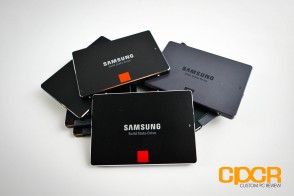 Back when the Samsung 840 PRO was released in 2012, I really didn’t really think Samsung would release another SATA based drive as its successor. At the time, the Samsung 840 PRO was already clearly hitting the limits of the SATA interface, and there wasn’t really all that much room for improvement. Fortunately, Samsung decided that I was wrong, that there was room for improvement, and that the Samsung 850 PRO can and will be better than the Samsung 840 PRO in just about every way possible.
Back when the Samsung 840 PRO was released in 2012, I really didn’t really think Samsung would release another SATA based drive as its successor. At the time, the Samsung 840 PRO was already clearly hitting the limits of the SATA interface, and there wasn’t really all that much room for improvement. Fortunately, Samsung decided that I was wrong, that there was room for improvement, and that the Samsung 850 PRO can and will be better than the Samsung 840 PRO in just about every way possible.
Performance wise, the Samsung 850 PRO is just about as fast as it gets. I know I’ve used that phrase quite a lot lately (possibly even with the Samsung 840 PRO back in 2012), but we’re really pushing the limits of the SATA 6Gb/s interface with performance numbers in the 550/530MB/s sequential read/write range. Since there isn’t much room for improvement top end, it’s nice seeing SSD manufacturers across the board focusing their efforts on steady state performance and I/O consistency. In the punishing PC Mark 8 Expanded Storage Benchmark, the Samsung 850 PRO was twice as fast as the older Samsung 840 PRO and outperformed all competitors by a fair margin.
In addition to the increase in performance, Samsung has also added SED security features to the Samsung 850 PRO as well, putting the Samsung 850 PRO in feature parity with the mainstream oriented Samsung 840 EVO. Prior to this, businesses and media professionals had to choose between the performance of the Samsung 840 PRO or the SED features of the Samsung 840 EVO. With the addition of TCG Opal 2.0 and IEEE-1667 support, those who require the performance of a PRO drive yet still want SED features can now go with the Samsung 850 PRO.
| Manufacturer | Samsung | Samsung | Samsung | Samsung |
|---|---|---|---|---|
| Model | 850 Pro | 850 Pro | 850 Pro | 850 Pro |
| Capacity | 128 GB | 256 GB | 512 GB | 1 TB |
| Street Price | $129.99 | $199.99 | $399.99 | $699.99 |
| Price/GB | ~$1.02 | ~$0.78 | ~$0.78 | ~$0.68 |
| Check Price | Click Here | Click Here | Click Here | Click Here |
Pricing on the Samsung 850 PRO 512GB SSD as reviewed today is expected to be around $429.99, or around $0.83/GB. Considering it’s the fastest client SATA drive on the market, has the best software stack, and includes a 10 year 40GB/day warranty, it’s incredible that the drive doesn’t cost more than it does. Of course as production ramps up in the next couple months, I wouldn’t be surprised to see prices drop even further making it an even sweeter SSD than it already is.
As for availability, Samsung expects the drive to go into RTM (Release to Manufacturing) sometime around the 15th with general availability soon afterwards. I’m told that e-tailers will probably be taking pre-orders ahead of time as well, so be on the lookout for that if you want to be one of the first in line for the new drive.
With the release of the Samsung 850 PRO, Samsung has taken a pioneering leap forward, putting it well ahead of the competition in almost every way. The Samsung 850 PRO has proved to be a very worthy successor to the Samsung 840 PRO and is in my opinion the best client SATA SSD on the market today. There’s simply no other drive that offers the same industry leading level of performance, endurance, features, and warranty. Highly recommended!
**Update 6/30/2014 – The Samsung 850 PRO’s launch date has been confirmed for July 21.
**Update 7/14/2014 – Pricing on the Samsung 850 PRO will be $129.99 for the 128GB capacity, $199.99 for the 256GB capacity, $399.99 for the 512GB capacity, and $699.99 for the 1TB capacity. Chart above has been updated to reflect new pricing. Pre-orders on Amazon are open now. The drives are expected to ship on July 21.
Sample provided by: Samsung
Availability: Amazon

